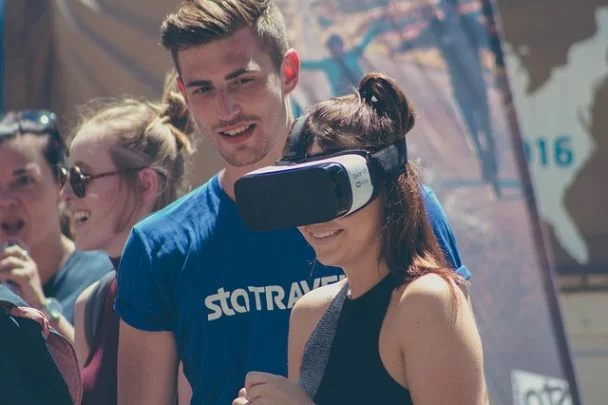What to Expect From Google’s Daydream VR Platform and Headset

At the risk of sounding dramatic, 2016 is the year of virtual reality. We now have an array of options, from the Oculus Rift and Sony’s PlayStation VR to the Samsung Gear VR on mobile.
It seems like everyone wants to get in on the action, and now Google is joining the party.
During the company’s October 4th press event, they not only unveiled new flagship phones and tablets, but they also revealed a homegrown virtual reality headset. It’s rightfully dubbed the Daydream platform. Daydream VR uses proprietary technology built-in to the new Google phone models and the latest version of Android.
Like the Gear VR, the Daydream headset uses connected phones as the display. But with Daydream, you can just pop in a compatible phone and everything will enter VR mode automatically.
What makes Daydream VR different from something like the Gear VR is that users will be navigating the platform with a special controller — like one you’d see for the Nintendo Wii.
The handheld controller includes a touchpad and physical buttons, but really you’ll be controlling the action through hand gestures and movements. For example, you can wave the controller back and forth to move through a menu or list.
Will Daydream Work With Other Devices?
Of course, Google’s newly announced Pixel and Pixel XL phones will be the first to work with the Daydream headset. But other compatible devices will come available in time.
Google has teamed up with other companies, like HTC, to develop more Daydream-ready phones, headsets and accessories. Obviously, they’ll release more information soon.
Since Daydream is a VR platform — and not a specific device — it means we’ll see headsets from a variety of manufacturers. HTC is rumored to be working on a headset currently, but it’s likely we’ll see other versions from Motorola, Asus and more.
The initial headset, called Daydream View, is akin to Google Cardboard. The exception is that View is not actually made of cardboard — it just borrows the same style and design.
View is also a lot more affordable than comparable VR headsets on the market. That’s good news for anyone who hates emptying their wallet.
What Is Daydream View?
Daydream is the platform, and View is the first VR headset that will take advantage of it. As we already mentioned, Google kept the design for the View similar to Google Cardboard. The headset case is made of plastic and a squishy, foam-like material.
It does not include a display, relying instead on connected smartphones to handle the VR content. This means that the circuit boards found in small devices — which would otherwise power such hardware — are merely used as a conduit of sorts.
Clay Bavor, the head of Google VR, says that they designed the View to be attractive: “…We looked at headsets, [and] they looked and felt much more like consumer electronics, gadgets, than they did something you’d wear. [So] we wanted [the View] to be something you’d look at and know how to put on, that would be unintimidating.”
In other words, the View is designed for everyone — even VR- and tech-illiterate folks.
The View will come in three different colors: Slate, Snow and Crimson. But only Slate will be available at launch. As for the price, it’s rumored to be $70-$80, but nothing is set in stone yet.
What Can You Do With Daydream and Google’s VR Platform?
It’s too early to list everything you’ll be able to do with Daydream. Most likely, there will be media content, apps, games and more.
Google has created a VR-optimized version of the Play Store. Through partnerships, they’ve also confirmed more apps will be modified to work with the platform, though nothing specific has been named. Bavor did tease Hulu, Netflix and Lionsgate, though.
Of course, since this is Google’s baby, they’ll also be optimizing their own app lineup, including YouTube, Google Play Movies and Music, and even Google Streetview.
The plan is to release a slew of VR-optimized apps as soon as possible. This comes as no surprise, considering this year’s I/O developer conference had a significant focus on VR.
Image by vylip


